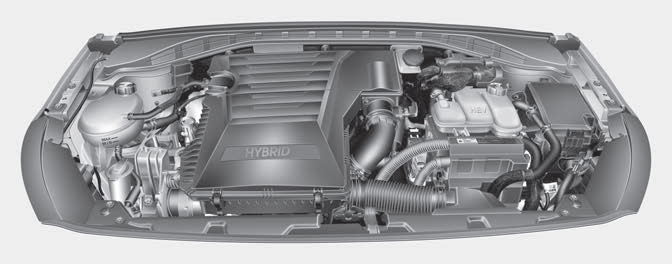Hyundai Ioniq: Brake System / Stop Lamp Switch. Repair procedures
Hyundai Ioniq (AE) 2017-2025 Service Manual / Brake System / Brake System / Stop Lamp Switch. Repair procedures
| Removal |
| 1. | Turn ignition switch OFF and disconnect the negative (-) battery cable. |
| 2. | Remove the lower crash pad. (Refer to Body - "Crash Pad") |
| 3. | Remove the knee airbag. (Refer to Rstraint - "Air Bag Module") |
| 4. | Disconnect the stop lamp switch connector (A).
|
| 5. | Pull the locking plate (A) as indicated by the arrow.
|
| 6. | Turn stop lamp switch 45° counterclockwise and remove it.
|
| 7. | Inspect a removed stop lamp switch along the below procedures.
|
| Installation |
| 1. | Fix the brake pedal arm and insert fully the stop lamp switch as hiding contact part. Turn stop lamp switch 45° clockwise and install it.
|
| 2. | Assemble locking plate (A) by pushing.
|
| 3. | Confirm the gap between stop lamp switch and bracket.
|
| 4. | Connect the stop lamp switch connector.
|
| 5. | Remove the knee airbag. (Refer to Rstraint - "Air Bag Module") |
| 6. | Install the lower crash pad. (Refer to Body - "Crash Pad") |
| 7. | Connect the negative (-) battery cable. |
| Adjustment |
| 1. | Turn ignition switch OFF and disconnect the negative (-) battery cable. |
| 2. | Remove the lower crash pad. (Refer to Body - "Crash Pad") |
| 3. | Remove the knee airbag. (Refer to Rstraint - "Air Bag Module") |
| 4. | Confirm the gap between stop lamp switch and bracket.
|
| 5. | If the gap between stop lamp switch and bracket is not 1.0 - 2.0 mm (0.04 - 0.08 in), check the mounting clip and other part of around stop lamp. |
| 6. | If there is normal, remove the stop lamp switch and then install again. |
| Inspection |
1. Fuse Inspection
Mount the test fuse to the switch fuse and relay fuse part to confirm a normal joint fit.


2. GDS Data Analysis
| 1. | Analyze GDS data and confirm if there is anything wrong with the stop lamp switch.
|
3. Inspection Of Connector By Each Part
Check to see whether or not each connector has been damaged, or terminal surge, or incomplete connection has taken place
[Engine Room Junction Box]

[ABS / VDC Control Module]

4. Inspect The Stop Lamp Circuit
Connect probe to each terminal wire and confirm oscilloscope waveform.
[Stop Lamp Switch Input / Output]

[Oscilloscope Waveform Screen]

 Stop Lamp Switch. Troubleshooting
Stop Lamp Switch. Troubleshooting
Troubleshooting1. Part diagnosis Items Cause Symptom Switch fuse Faulty fuse connection, Damaged fuse –
DTC Code : P0504–
Symptom : Shifting gear trouble, Starting failure, Cruise control function cancelation trouble, EPB function cancelation trouble, Stop lamp lighting trouble, ESP OFF light illuminated...
Other information:
Hyundai Ioniq (AE) 2017-2025 Owner's Manual: Special Driving Conditions
Hazardous Driving Conditions When hazardous driving elements are encountered such as water, snow, ice, mud and sand, take the below suggestions: Drive cautiously and keep a longer braking distance. Avoid abrupt braking or steering. When your vehicle is stuck in snow, mud, or sand, use second gear...
Hyundai Ioniq (AE) 2017-2025 Service Manual: Description and operation
D..
Categories
- Manuals Home
- 1st Generation Ioniq Owners Manual
- 1st Generation Ioniq Service Manual
- Theft-alarm System
- If the 12 Volt Battery is Discharged (Hybrid Vehicle)
- Child-Protector Rear Door Locks
- New on site
- Most important about car
Hybrid Vehicle Engine Compartment

1. Engine oil filler cap
2. Engine oil dipstick
3. Engine coolant cap
4. Engine coolant reservoir
5. Inverter coolant reservoir
Copyright © 2025 www.hioniqae.com










